CHERISHED TRADITIONS: ELL TEACHERS CREATE A CULTURAL VIDEO PROJECT





HOW SPELLING BEES CAN IMPROVE LITERACY SKILLS IN THE CLASSROOM






CHERISHED TRADITIONS: ELL TEACHERS CREATE A CULTURAL VIDEO PROJECT





HOW SPELLING BEES CAN IMPROVE LITERACY SKILLS IN THE CLASSROOM





Spring is a time of hope and optimism. The weather improves and, along with it, our collective outlook. Things don’t seem so bad if the sun is shining and the birds have returned to their warmer habitat.
Spring also marks the celebration of many holidays and festivities. A trio of ELL teachers decided to bring some of the cultural traditions of their students to the foreground as a means of highlighting knowledge, understanding, and shared histories. Sukhdeep Birdi, Harjit Chauhan, and Kawaldeep Ghuman wanted to show their entire school district how some of their students celebrate festivities such as Ramadan and Eid each year in March and April, and Diwali in October or November. The three teachers produced a series of videos that could be widely shared, making information about these traditions instantly accessible to both students and staff.
Our feature article by writer Fiona Tapp explores another kind of celebration: the celebration of spelling. Her piece delves into the world of spelling bees, which, yes, still exist and remain popular in Canada and the United States, as well as in many other countries around the world. Spelling bees have been credited with improving reading abilities and comprehension, as word meanings become clearer the more a child spells. These contests also bring out the competitive spirit in their youthful contestants. They’re not only about work and practice, however. Spelling bees can be social events where kids meet their peers on common ground. Plus, they are a lot of fun. Apart from entering formal competitions, Tapp also looks at how spelling bees can be used in the everyday classroom to benefit students.
On a more sombre note, this March marks three years since the World Health Organization declared COVID-19 a pandemic, and the world was changed forever. For many, worries of COVID have fallen to the wayside, but we mustn’t forget that it is still out there circulating in the community. The previous years have seen large impacts and many challenges for schools and educators. However, in this issue we are pleased to present a more lighthearted take on one teacher’s journey through the unruly waters of the pandemic. In her journal-style article, primary teacher Sarah Abbey charts her experiences navigating the ups and downs of remote teaching, hybrid teaching, and the “new normal” of in-person teaching. Comical and frustrating, no doubt many teachers can easily relate to her stories.
How about taking a field trip to learn with LEGO? The locations we’ve highlighted offer a variety of activities that challenge students on many different levels. Having fun, of course, is also a big part of the experience. After all, who doesn’t like LEGO?
Relating to the topic of worldwide issues, CURRICULA asks us to consider our responsibilities as members of a global community. This latest lesson plan offers a pragmatic, practical approach for introducing students to the serious topics of poverty, food insecurity, and homelessness.
Finally, this issue’s Bookstuff celebrates the art of poetry. Since March 21 is World Poetry Day and April is National Poetry Month in Canada, we’ve complied a comprehensive list of books (including several novels-inverse) that use poems to explore a variety of different subjects from human rights to math to geography, and more.
Until next time.
CONTENTS
FEATURE
How Spelling Bees Can Improve Literacy Skills in the Classroom
Fiona Tapp
COLUMNS
PUBLISHER AND EDITOR
Wili Liberman
04 18
Bookstuff
Poetry
MANAGING EDITOR
Lisa Tran
ASSOCIATE EDITOR
06 20

09 14
Teacher’s Pet
10
Classroom Perspectives
Cherished Traditions: ELL Teachers Create a Cultural Video Project
Sukhdeep Birdi, Harjit Chauhan, and Kawaldeep Ghuman
Field Trips
Learning with LEGO
Classroom Perspectives
Crazy COVID Chronicles: Reflecting on a Year of Pandemic Teaching
Sarah Abbey
CURRICULA
Global Issues: Poverty, Food Insecurity, and Homelessness
Beth Lyons
AD INDEX 25
TEACH is published by 1454119 Ontario Ltd. Printed in Canada. All rights reserved. Our contact info is: 1655
Raenu Sarathy
ASSISTANT EDITOR
Kelsey McCallum
CONTRIBUTORS
Sarah Abbey
Sukhdeep Birdi
Harjit Chauhan
Kawaldeep Ghuman
Beth Lyons
Fiona Tapp
ART DIRECTOR
Pauline Lopez
JUNIOR GRAPHIC DESIGNER
Amos Chin
EDITORIAL ADVISORY BOARD
Bernice Slotnick
Teacher (Retired)
John Myers
Curriculum Instructor, OISE (Retired)
Rose Dotten
CEO and Head Librarian, Shelburne Public Library
Suite 321,
E: info@teachmag.com T: (416) 537-2103. For subscription info, visit shop.teachmag.com. Unsolicited articles, photographs and artwork submitted are welcome but TEACH cannot accept responsibility for their return. Contents of this publication may be reproduced for teachers’ use in individual classrooms without permission. Others may not reproduce contents in any way unless given express consent by TEACH. Although every precaution is taken to ensure accuracy, TEACH, or any of its affiliates, cannot assume responsibility for the content, errors or opinions expressed in the articles or advertisements and hereby disclaim any liability to any party for any damages whatsoever. Canadian publication mail sales product agreement No. 43579512. ISSN No. 1198-7707.
oetry is an often underappreciated form of art that aids in the development of language, writing skills, creative thinking, and self-expression. It offers students a chance to play with words and experiment with writing structures, and can be an innovative way to bring joy to reading. In recognition of poetry’s many benefits, we’ve compiled a list of books that use poems to explore a wide range of topics, from human rights to math to geography, and more!
 BY ERICA MARTIN
BY ERICA MARTIN
Viking Books for Young Readers (February 2022)

Grade Level: 7 to 12
This debut poetry collection explores the American civil rights movement in the 1950s and ’60s. Through striking, potent verse, Erica Martin looks at both well-documented and lesserknown events that contributed to the movement. The book also includes historical photographs, research, and a timeline.
MARCH 21
World Poetry Day
APRIL
National Poetry Month in Canada
2 COUNTING IN DOG YEARS AND OTHER SASSY MATH POEMS
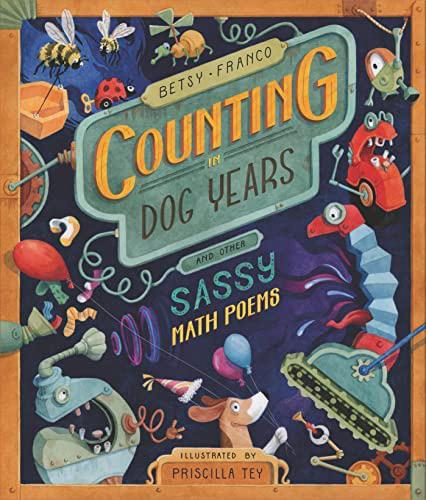 BY BETSY FRANCO,
BY PRISCILLA TEY
BY BETSY FRANCO,
BY PRISCILLA TEY
ILLUSTRATED
Candlewick Press (October 2022)
Grade Level: 3 to 7
Betsy Franco’s playful math poems add up to good, wholesome fun in this STEAMcentred collection. Whether students are multiplying mice, pricing out cups of lemonade, or counting how long it takes Mom to answer a question, they’re sure to delight in Franco’s silly rhymes and Priscilla Tey’s cheeky drawings. (Additional resources include a teacher’s guide.)
Peachtree (March 2023, Forthcoming)
Grade Level: 3 to 7
Galápagos introduces readers to the unique island ecosystem that allowed Charles Darwin to develop his theory of natural selection. Leslie Bulion combines poetry with science notes to tell the story of these isolated islands and the unique species found there.
HarperCollins (March 2023, Forthcoming)
Grade Level: 5 to 12
This novel-in-verse tells the true story of Henny Sinding, a 22-year-old amateur lighthouse keeper who helped smuggle hundreds of Jewish families from Denmark to Sweden during the Second World War. Author Susan Hood uses thought-provoking, enchanting verse to capture the intricacies of this heroic tale.
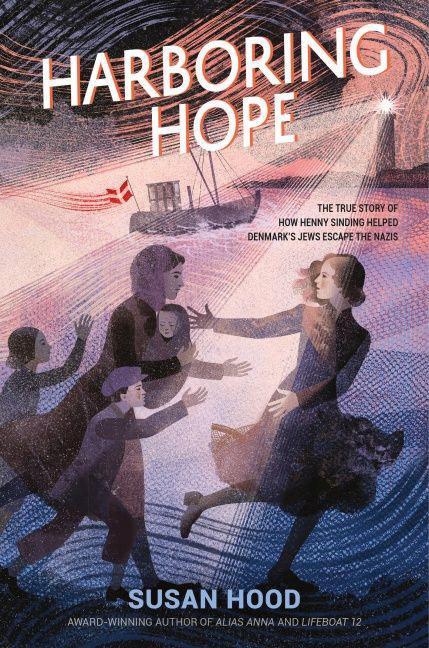
5 HOW TO WRITE A POEM
BY KWAME ALEXANDER AND DEANNA NIKAIDO, ILLUSTRATED BY MELISSA SWEET
Quill Tree Books (April 2023, Forthcoming)
Grade Level: K to 3
In How to Write a Poem, award-winning poet and author Kwame Alexander teams up with Baltimore poet Deanna Nikaido to create a magical celebration of the world around us. The book encourages students to find inspiration in their everyday surroundings, to stop and listen to all the poems that are just waiting to be written.
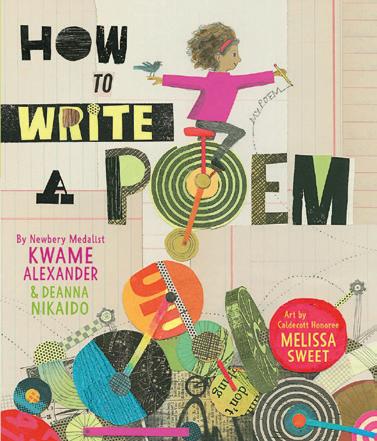
6 LIKE A HURRICANE BY JONATHAN BÉCOTTE, TRANSLATED BY JONATHAN
KAPLANSKYOrca Book Publishers (February 2023)
Grade Level: 4 to 7
Like a Hurricane is a novel-inverse told from the perspective of a teen who’s keeping his sexuality a secret. He wants to tell his family and friends, but is afraid that they’ll reject him. Jonathan Bécotte’s minimal yet meaningful text offers a vivid exploration of identity that is sure to resonate with many middle grade readers.

7 SUPER SMALL: MINIATURE MARVELS OF THE NATURAL WORLD BY TIFFANY STONE, ILLUSTRATED BY
ASHLEY SPIRESGreystone Books (April 2023, Forthcoming)
Grade Level: K to 3
This comic-style STEAM book combines dialogue and poetry to teach students about the real-life superpowers of the smallest creatures on Earth. Critically acclaimed author and poet Tiffany Stone writes about pygmy seahorses, axolotls, snails, grasshoppers, and more in this delightful celebration of the power of being small.

8 WINGS IN THE WILD BY
MARGARITA ENGLEAtheneum Books for Young Readers
(April 2023, Forthcoming)
Grade Level: 7 to 12
This contemporary love story is about two teens fighting for a better future. After Soleida’s parents are arrested for harbouring illegal art, she escapes to Costa Rica with other Cuban refugees. There she meets Dariel, an enchanting Cuban American musician who helps her raise awareness of the imprisoned artists in Cuba. Told through dramatic verse, this novel looks at climate action, human rights, and the love between two people from different worlds.
 By Fiona Tapp
By Fiona Tapp
You could be forgiven for thinking that spelling bees may not be as important in an age of instant spellchecks and predictive text, but the competitions are so much more than simply memorizing a list of words. The young wordsmiths who take part in these exciting events study root words and etymology to spell in front of an audience, quickly and competently. Participating in spelling bees, and the practice required to compete, not only helps children develop spelling skills and reading comprehension, but can bolster their confidence and communication skills as well.
The longest-running and most famous spelling competition in the world is the Scripps National Spelling Bee, held annually in Washington, DC, since 1925. Students in Grades 1 to 8 compete at regional events all across America to earn their place on the stage.
At the national competition, qualifying spellers each take their turn to spell from a previously shared list of up to 600 words and a variety of unseen words known as “off list” options. Participants can ask for the word to be repeated, used in a sentence, for the definition, the language of origin, or for alternate pronunciations. If they spell the word correctly, they move on to the next round, but if they hear a bell ring, they’re out.
The process continues in heats until one winner remains. And with a grand prize of a whopping $50,000, it’s no wonder that the competition is fierce among the hundreds of participants!
The 2022 champion was 14-year-old Harini Logan, who won with the word “moorhen,” a waterbird resembling a cross between a duck and a chicken. She successfully spelled 22 words in 90 seconds during the event’s first-ever lightning-round tiebreaker. After her triumph, she went on a coast-to-coast victory tour, which even included a private tour of the White House.

with his winnings, he prefers to funnel the money back into future competitions. Although, he does treat his family to a meal at a restaurant to celebrate his wins.
As for those winning words, some can be rather obscure, like his spelling of the Hawaiian word “pahoehoe,” a type of lava flow. However, Zhang says an incorrect spelling of “inopportune” as a fifth grader still haunts him to this day.
His proficiency in spelling helps him in his everyday life and academics. During one lesson in biology class, “we learned about necrotizing fasciitis,” he says. “By using my experience at spelling bees, I was able to actually decipher what it meant because I knew ‘necro’ means death or dying, ‘fasci’ means [tissue], and ‘itis’ means inflammation. So it helped me literally know the word before it was even taught to me. And that’s really cool!”
The Spelling Bee of Canada’s 35th annual competition was held on June 12, 2022, and screened on CBC Sports. To find out more about the competition details for 2023 and how your students can get involved, check the SBOC website for updates.
Canadian champs have a somewhat humbler experience at the Spelling Bee of Canada (SBOC) national competition, but there are still prizes to be won. Founded in 1987 by Julie Spence, SBOC has supported over 70,000 children to take part in the annual event, including Canadian two-time spelling bee champion Jaden Zhang. He has also competed three times at Scripps, tying for 42nd place out of 516 spellers.
Zhang, who speaks English, French, and Mandarin, is now 16 years old and a high school student based in Ottawa. He was sponsored by Big Brothers Big Sisters of Canada to attend the Scripps championship when he was in Grade 5, and has won other competitions across Canada. Recently he has also discovered a passion for coaching other spelling bee students.
“When you see the mind of the students as it click[s] for them, [when] they realize that it’s just puzzle pieces, that’s the moment I really love about teaching,” he says.
Zhang has scored some of the cash prizes on offer but says, unlike one winner who apparently purchased a dog
Donna Paul, a Toronto-based elementary Montessori teacher with 15 years of experience, extols the virtues of spelling competitions as a classroom tool to improve students’ reading skills. “Spelling bees help students break down large words into manageable chunks,” she explains, “and in doing so, they learn to read with greater comprehension.”
Paul—who is also an online tutor, self-published author, and blogger—describes herself as a “spelling bee enthusiast” and actually started her own annual spelling bee competition back in 2008. She preps students for the contest ahead of time by giving them a list of words to study. The list also includes a definition, a syllable breakdown, and a history of each word. But students aren’t merely committing these words to memory, it’s more like they’re conducting a word study; not every word will come up in competition, so each word list further expands the students’ vocabularies.
Zhang says spelling bees are a great place to make new friends, source coaches, and just have fun. At the Scripps competition, participants’ names are featured in a
“Beekeepers” book, a type of directory that also includes their photo and a short bio. It’s become a tradition to get participants to sign their entries, like a yearbook, and to collect as many signatures as possible. The organizers also arranged a book club and an ice cream social for spellers to enjoy.
In the same way, Paul has expanded her competition to become more than just a spelling recitation—it’s now a highly anticipated school event.
“In the first year of hosting the spelling bee, I had the sixth graders lead the charge,” she explains. “They organized everything from selecting the date and location of the spelling bee to working with me to create a list of words to use. They made posters to advertise the event around the school and one sixth grader [even] crocheted a grapefruit-sized bee for the winner of the competition to take home. This bee became the coveted prize many students worked very hard to win.”
Paul recommends other educators should incorporate spelling bees into their teaching repertoire, whether they run a small-scale inschool spelling bee or sign up for a national competition like those organized by SBOC. “Participating in a spelling bee can be a valuable experience for elementary students and is a great way to support students’ reading and writing development,” she says.
FIONA TAPP is a former teacher and school administrator of 13 years. She writes about education, parenting, and travel for a variety of publications including National Geographic, the Globe and Mail, the Toronto Star, the Sunday Times, and many more.
2

Experienced spelling bee participants like Zhang receive lists of hundreds of potential words before a competition. For newbies, however, start with a smaller list of perhaps 50 words that also contain rhyming family words or those that share a root word.
Get different grades involved if you can; seeing older kids tackle tricky words can inspire students in younger grades.
The correct way to announce each word is to say it clearly, then use it in a sentence, then repeat the word again. For example, “Skating. I like to go ice skating in the winter. Skating.”
It can simply be stickers, extra recess, or a class pizza party, but a reward makes the effort so much sweeter.
If some kids are too shy or self-conscious to spell orally, let them write their answers, or give them other important jobs like reading off the word list, keeping score, or timing others. Make sure you publicize the event with posters or on your school’s social media pages and let parents know how they can help.
If you’d like your dog or cat to be featured, visit our website and check the submission guidelines.
Atticus | 14y | Golden/Lab mix

Location: Ames, IA
Parent: Britt Jungck
Laid-back, Loved, Loyal
Winnie | 3y | Newfoundland

Location: Puyallup, WA
Parent: Sherry Siewert Huggable, Lazy, Sizeable
Sean | 6y Domestic Shorthair
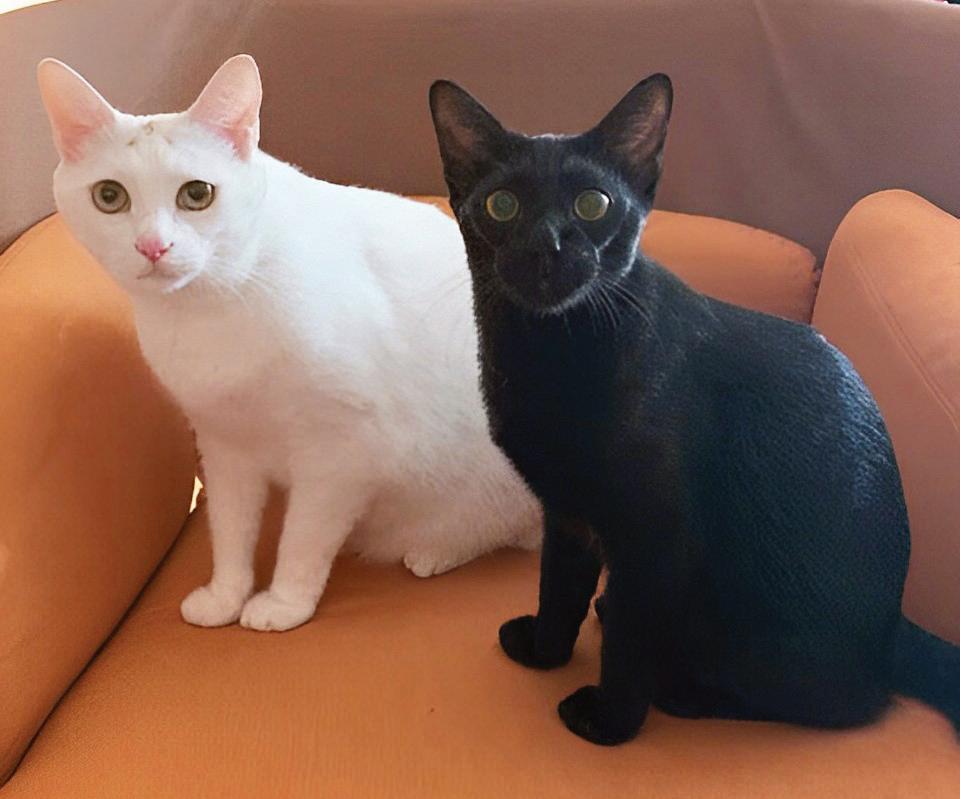
Curious, Gentlemanly, Particular
Julian | 1y Domestic Shorthair Affectionate, Mischievous, Shy
Location: South St. Paul, MN | Parent: Janel Sullivan
As ELL teachers for the Maple Ridge and Pitt Meadows district in British Columbia, we’ve noticed that a fervour of excitement fills the air at our schools each time a major holiday approaches. Students happily share their family traditions and customs, whether that means enjoying a bountiful meal at Thanksgiving or leaving cookies and milk for Santa at Christmas.
The excitement is so contagious that even our ELL students, who may be new to these holidays, often want to join in the festivities too. Naturally, they also want to reciprocate and discuss their own cultural celebrations, such as Eid and Diwali, with their peers. But while they feel comfortable doing so during small-group literacy lessons, many don’t know how, or feel too shy, to share with other students in larger settings.
In an effort to support our students and help them begin these conversations, we decided to create authentic resources that would highlight the wide range of celebrations, festivals, and holiday traditions that are important to them so that everyone in our school district could take part.
We decided to first create resources for the festival that we were most familiar with: Diwali. Diwali is a festival of lights that’s celebrated around the world by Sikhs, Jains, and Hindus to symbolize light over darkness. It is observed every year in mid-October or earlyNovember at the time of the new moon, which is the darkest day of the month. The word Diwali comes from the Sanskrit word dipavali, which means “rows of lighted lamps.”
Houses, shops, and various public places are decorated with small oil lamps called diyas that represent happiness and health. Diyas are also lit around the gurdwara or temple, which people visit in the evening to offer prayers and good wishes for the future and their loved ones. Women, men, and children typically wear traditional outfits and jewelry, often brand new, as wearing new clothes represents a fresh start.
In preparation for Diwali, people make rangoli, which is a type of traditional art that uses coloured rice, dry flour, flower petals and diyas to make designs near the door entrance. Rangoli symbolizes welcoming others into your home. Another type of Diwali art that is commonly practiced is the use of mehndi or henna. It is applied to the hands and leaves a beautiful orange/ reddish stain when it dries, signifying good luck and happiness.

Diwali is perhaps the best time to let our loved ones know how much they mean to us. Each family celebrates Diwali in their own way with festive and joyful activities, although many gather together to eat special dishes and sweets, and to share gifts. As a way of wrapping up the festival, families often enjoy Bhangra music and dance, and light fireworks and sparklers.
We began our project by searching our school and community libraries and investigating online resources such as Teachers Pay Teachers and YouTube for inspiration. There were a variety of existing resources at our disposal, but as the three of us had each grown up celebrating Diwali, we thought it might be useful to make a personal and authentic video that would highlight our own experiences with the festival. It was our hope that such a video project could be easily accessible for the school community.
At the time, due to the pandemic, we were working both remotely and inperson, and had to take precautions with how to plan the project. We relied heavily on Zoom meetings to pool our ideas, and spent countless hours online together in the evenings after our children had gone to sleep.
First, we wrote a script using kid-friendly language to explain Diwali, then collected images and took photos of our own family celebrations to provide additional visual components for the video. Next we had to find a videographer to document the project. Luckily, after some extensive research, we came across someone local who was willing to make a home visit for a few hours of filming.
On the morning of the video shoot, we lit diyas, hung up artificial marigold garlands, laid out plates of mithai (sweets), and donned our traditional outfits. After setting out a few other symbols of Diwali that would be shown in the video, it was time to film.
The recording process took almost three hours. We talked about what Diwali is and how it is celebrated; we also prepared rangoli, applied henna, and danced to Bhangra music. Then the videographer

took the film back to the studio for editing. We continued to communicate with the editor until the video was complete, and were beyond thrilled with the end result!
Once the project was finished, the Diwali video was shared within our school district. As an additional resource, we also attached a lesson plan that we made for teachers to use as part of their instruction.
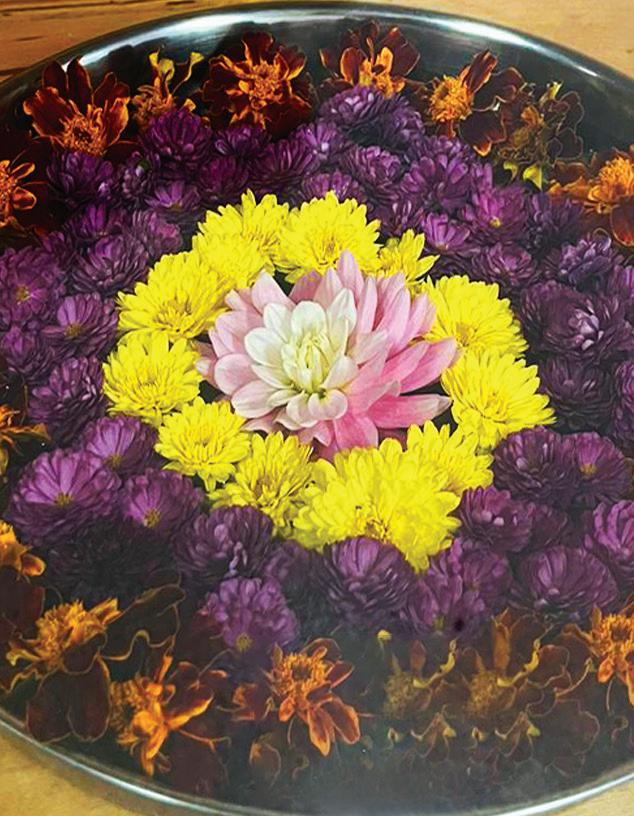
The feedback from students and staff across grade levels was overwhelmingly positive. Many teachers expressed that they used the video as a teaching tool in their classrooms. After receiving such encouraging feedback, we decided to produce a second video—this time led by students—about Ramadan and Eid the following spring.
For millions of Muslims across the world, Ramadan is an important time of the year. It is celebrated in the ninth month of the Islamic calendar, and it begins on the first sighting of the new crescent moon. Ramadan is a month of good deeds and charity, such as sharing with those in need, and is a new beginning for many Muslims.

A significant part of Ramadan is fasting. According to those practicing Ramadan, fasting is a sign of gratitude and it cleanses the body. Muslims regularly pray five times a day and during Ramadan they do extra prayers at home or at a mosque.
At the end of the Ramadan month, there is a three-day celebration called Eid Al-Fitr, which means the festival of breaking the fast. Eid starts with a prayer. Some people dress up and gather to enjoy a feast, treats, and to exchange gifts. It is a time for reflection with family and community.
For the second video, we approached another ELL colleague, Moona Tyers, to collaborate with us, as she
had her own memorable experiences of celebrating these holidays. One of her ELL students participated in the project as well.
We spent many recesses and lunch breaks helping students practice their lines for the video. With great enthusiasm, students were happy to answer questions and share their personal experiences of Ramadan. Then we contacted the school district videographer and set the schedule for filming. We emailed the script and also provided photographs sent in by our students and families to be included in the project.
On the day of filming, we started the morning at Kawaldeep’s school, where we all gathered to film the introduction. Her students shared stories about Eid, such as how their families decorate and celebrate the holiday. One Grade 2 student even performed an original song! Then we went to Sukhdeep’s school, where her students answered questions about Ramadan. For example: What does it mean to fast for Ramadan? What type of clothes do people wear during that month? And what foods are special to Ramadan?
Finally, the videographer finished filming at Moona’s school, where she and her students shared their personal experiences of celebrating Ramadan and Eid. Although the video was shot at three different schools, the videographer did an amazing job of compiling it into one beautiful presentation and we were very appreciative of the final product.
We shared the video within the district and included resources we had found online and in the library. The feedback from this video was superb! Students were thrilled to have played a big role in the creation of the video. They enjoyed dressing up in traditional clothing, as well as being able to share their knowledge, personal experiences, and family traditions about Ramadan and Eid. All of the participating students were so proud of how the video turned out and were eager to share it with their friends and family.
After watching our videos, staff shared that they had not seen this type of resource before and were grateful for it. They were surprised how we found the time to put it together. The Indo-Canadian ELL students were inspired to see their own cultures represented in the videos and were excited to make personal connections to them. Families even reached out to us to share their gratitude.
For us, we were happy to amplify our students’ voices and raise cultural awareness within our school communities. As for what’s next? We are hoping to collaborate again and create even more videos that honour the diversity of our students and celebrate the beauty of their cherished traditions.
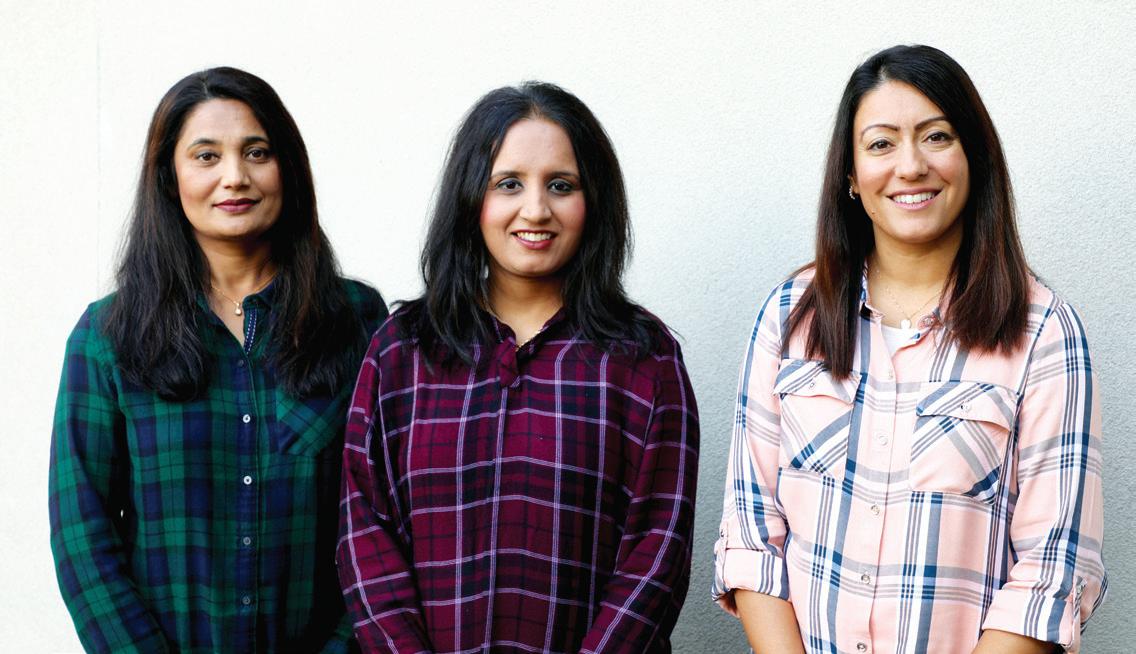
GRADE LEVEL: JUNIOR (4-6)
THEME:
GLOBAL ISSUES
SUB-THEMES:
POVERTY, FOOD INSECURITY, HOMELESSNESS
FEATURED BOOKS
POVERTY
Pablo Finds a Treasure by Andrée Poulin, illustrated by Isabelle Malenfant (Annick Press, 2016)

POVERTY
Taking Action to End Poverty by Rebecca Sjonger (Crabtree Publishing Company, 2019)

HOMELESSNESS
No Fixed Address by Susin Nielsen (Tundra Books, 2020)
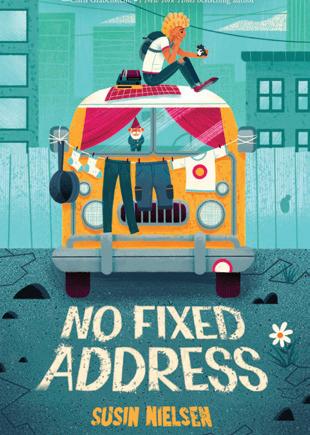
Good to use as an ongoing read aloud during the guided inquiry
HUNGER/FOOD INSECURITY

Our Little Kitchen by Jillian Tamaki (Groundwood Books, 2020)

Guided Inquiry: What is our responsibility as members of a global community? (Building context and developing an inquiry mindset.)
By exploring issues like hunger, food insecurity, homelessness, and poverty students will begin to recognize the importance of being active, engaged citizens in both their local and global communities. Educators will act as facilitators to help students work through a guided inquiry that introduces the UN Sustainable Development Goals and culminates with a service learning project.
MINDS ON PROVOCATION
Display pictures related to the various sub-themes for the lesson—meals/food, types of homes, etc. Here are some examples:
• Homes around the world by income
Description from the Dollar Street website: Imagine the world as a street ordered by income. Everyone lives somewhere on the street. The poorest
lives to the left and the richest to the right. Everybody else live [sic] somewhere in between. Welcome to visit all homes on Dollar Street!
• This is what kids’ breakfast looks like around the world Article from Today’s Parent that outlines what children from different countries around the world eat for breakfast (includes images).
Find other suitable pictures that address your students’ needs. Ask students what they notice and what they wonder about the pictures, what do the pictures have in common, what differences do they see? Provide sticky notes for students to record their ideas/wonders and stick them on the pictures, or use an interactive whiteboard (Jamboard) with one slide for each picture and have students add their ideas.
Students will read the listed picture books as mentor texts and the educator(s) will guide students to connect a picture book (i.e. elements of a narrative) to their experience with the wider global community and their local community using the following guiding question: What are the Sustainable Development Goals?
• United Nations Sustainable Development Goals (SDGs)
• What’s on My Plate? (poster)
• Night Stars (a zero-hunger comic)
Print off the images of the connected goals to display in class to start your pedagogical documentation wall. Use these images to explore new vocabulary and see where the students’ passions may lie. Students can add a sticky note with their name next to the goal they are most interested in learning more about, as well as questions they may have in relation to that goal.
• Goal 1: No Poverty

• Goal 2: Zero Hunger
• Goal 10: Reduced Inequalities
• Goal 17: Partnerships for the Goals
Create a class T-chart to structure the following guided inquiry questions:
• How might we act as responsible, global citizens to help others in our local community and other places across the world?
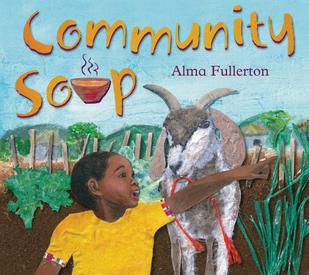
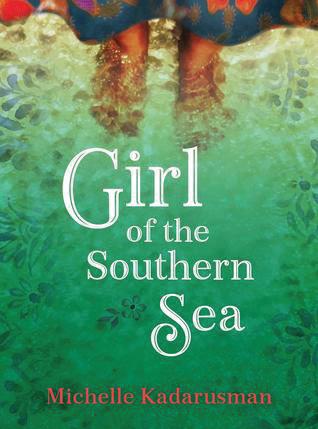
• What questions do I need to ask to learn more about these ideas?
Teachers should model for students how to brainstorm ideas related to these two questions and what new questions are created.

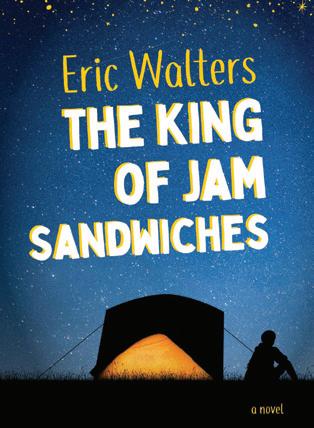

POVERTY
The
REFUGEES
Stormy
Salma
Community
 POVERTY Lily and the Paper Man by Rebecca Upjohn, illustrated by Renné Benoit (Second Story Press, 2007)
King of Jam Sandwiches by Eric Walters (Orca Book Publishers, 2020)
Seas: Stories of Young Boat Refugees by Mary Beth Leatherdale, illustrated by Eleanor Shakespeare (Annick Press, 2017)
HUNGER/FOOD INSECURITY
Soup by Alma Fullerton (Pajama Press, 2013)
NEW IMMIGRANTS
the Syrian Chef by Danny Ramadan, illustrated by Anna Bron (Annick Press, 2020)
POVERTY Lily and the Paper Man by Rebecca Upjohn, illustrated by Renné Benoit (Second Story Press, 2007)
King of Jam Sandwiches by Eric Walters (Orca Book Publishers, 2020)
Seas: Stories of Young Boat Refugees by Mary Beth Leatherdale, illustrated by Eleanor Shakespeare (Annick Press, 2017)
HUNGER/FOOD INSECURITY
Soup by Alma Fullerton (Pajama Press, 2013)
NEW IMMIGRANTS
the Syrian Chef by Danny Ramadan, illustrated by Anna Bron (Annick Press, 2020)
Students will read the two picture books Our Little Kitchen and Pablo Finds a Treasure and create a Venn diagram to compare the events and characters within the books.
To continue the guided inquiry and encourage students to make connections, teachers will use Taking Action to End Poverty as an anchor text to provide a starting point. Teachers will share relevant passages with the students and have them consider the following questions:
What is a food bank? Where is our local food bank? What questions might we ask the people who run the food bank to help us learn more? What actions might we take to support the local food bank and raise awareness?
• Food Banks Canada
• Canadians experiencing food insecurity during the COVID-19 pandemic, May 2020 (Statistics Canada)
Divide students into groups based on their interests in connection with the SDGs to begin researching these big ideas. Teachers may want to provide a list of local sources to help students start their research.

Teachers will provide the students with options of how they might present their learning and new questions that have been created over the course of the study. Educators should provide a list of choices to students which includes products they are familiar with and have had experience creating before. For example: infographic, stop motion video, PSA campaign, posters, video, etc.
Fundraising Campaign: Upcycled Shopping Bags – Here are some Creative Tools for Making and Sharing.
Gallery Walk: Provide an opportunity for students to view and interact with the projects of others and to reflect back on the questions of the guided inquiry. What answers do we now have? What new questions do I have?
Display pictures of foods from a variety of cultures and ask students what they notice and what they wonder. Record the answers on chart paper or a digital tool if working online.
Take time to discuss the ideas with the students. Ask them about sharing a special meal for a celebration or during a holiday with their loved ones.
Provide students with magazines and flyers so they can cut out pictures of foods they like and are thankful for. It might be necessary to engage the students in a discussion of what it means to be thankful and have gratitude.
Show the posters for SDG Goal 2: Zero Hunger. Ask students what they think it means. If you are using a pedagogical documentation wall, display the terms “food bank,” “not/enough,” “hungry.” Lead the students in a discussion of what food insecurity is in a developmentally appropriate way for your students.
Choose a few pages from Our Little Kitchen by Jillian Tamaki to highlight as a Minds On Provocation for the students prior to reading the book. Options: Display the pages and discuss or make a list of keywords or foods that are listed.
Read the book together and discuss.
Brainstorm how students might share the learning with others.
Investigating local food sources, sustainable farming, farmer’s markets, and zero-waste shopping.
• Inquiry-Based Learning: Canadian Resources to Support Inquiry Learning
• Author Websites:
- Susin Nielsen
- Andrée Poulin
- Jillian Tamaki
• Poverty and Homelessness:
- Nearly 50 percent of Indigenous children in Canada live in poverty, study says (Globe and Mail)
- Canada’s rate of homelessness may be higher than reported: Nanos survey (CTV)
• Hunger/Food Insecurity:
- Feed Ontario’s Hunger Action Month: Uniting food banks, industry, and community partners to address hunger and poverty in Ontario
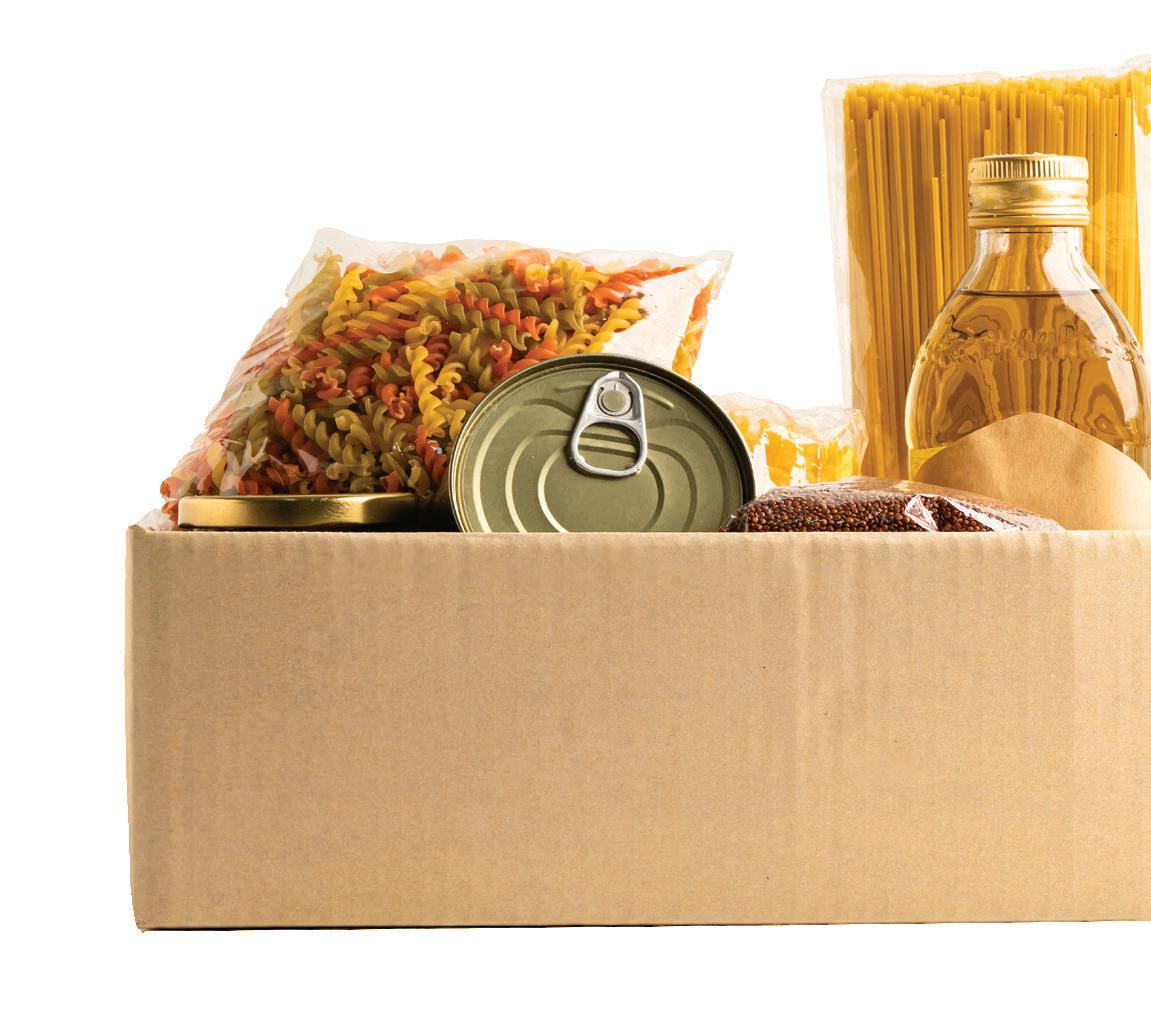
- Time to make healthy food a human right? (TVO)
- Ontario’s food-security groups are getting creative during COVID-19 (TVO)
- Emma and the Food Bank: Proceeds from this educational book support the Calgary Food Bank
- On the Brink of Famine (Frontline PBS): This video takes you inside South Sudan in 360° to meet people battling a manmade hunger crisis
• Refugees:
- Capacity Building K–12: Supporting Students with Refugee Backgrounds: A Framework for Responsive Practice (Ontario Ministry of Education)
It’s all about LEGOs! Yes, these little plastic bricks have transcended from a humble childhood toy box staple to a popular and sophisticated educational tool. From STEM to humanities to literacy, these multicoloured building blocks provide opportunities for students to not only play, but learn too, as they construct a wide variety of models, robots, and more. Let’s look at some LEGO-filled field trips and what they have to offer. Unable to travel out of school? There are on-site field trip options too!
Bricks 4 Kidz offers “in-school field trips” where trained instructors arrive with lesson plans, presentation materials, and all the LEGO bricks your students need. Kids participate in focused themes, including Space, Inventions, Famous Buildings, and Natural Disasters. More advanced levels offer LEGO robotics, coding, and video game design classes.
For more info and locations, visit: www.bricks4kidz.com
Winnipeg, MB
This mobile set-up brings the field trip fun to you. Preschool workshops will have kids engaged with trains, a racecar track, a marble run, and giant bags of Duplo LEGO. School-age programs will immerse kids in guided building (3D figures and mosaics) and tech builds using batteries and motors.
For more info, visit: www.brickadventureswpg.com
ON
At Toronto’s biggest LEGO-based education centre, class activities can range from 2nd graders building a bridge to high schoolers prototyping a product design. Advanced programs also have the option to incorporate role play! From a mayor, a NASA director, or a CEO, learners will take on characters as they build their LEGO stories. For more info, visit: www.bricklabs.ca/field-trips
BRICKSVarious locations in Canada
Field trip options include a junior program for younger kids, where they tinker to create robots using LEGO WeDo systems. For older kids, there are programs involving LEGO Mindstorms EV3 for more challenging robot-building and programing. In-school field trips can also be arranged. For more info, visit: www.engineeringforkids.com
This “ultimate indoor LEGO playground” features various build-and-play zones, rides, and more. Students can also benefit from one of the hands-on educational workshops offered at the centre, exploring topics such as pulleys and gears, tower structures, and the construction of narratives. For more info, visit: www.legolanddiscoverycentre.com/ toronto
Various locations in Ontario and New Brunswick
Snapology’s Discovery Centre is a play haven filled with LEGO varieties and other building toys such as Magna-Tiles, K’NEX, and polydrons. Choose from dozens of workshops where students get to design amusement parks, invent game bots, and explore favourite themes like Minecraft, Pokémon, Star Wars, and more. Snapology can also visit your school to host an on-site field trip! For more info, and locations visit: www.snapology.com
UNITED STATES LOCATIONS:
BRICKS 4 KIDS
www.bricks4kidz.com/locations
ENGINEERING FOR KIDS
www.engineeringforkids.com/locations
LEGOLAND DISCOVERY CENTRES
www.legolanddiscoverycenter.com
SNAPOLOGY
www.snapology.com/locations
The height of the pandemic brought many moments of upheaval and uncertainty, but amidst the tensions, there were also moments of laughter, especially in a class of third grade students. As time went on, I found myself recording the many unanticipated situations that COVID brought to teaching. Not only did this help keep me sane and provide an outlet for my thoughts and feelings, but I figured that one day I’d want to look back on the unique experiences of this time period, whether with laughter or tears—maybe even both.

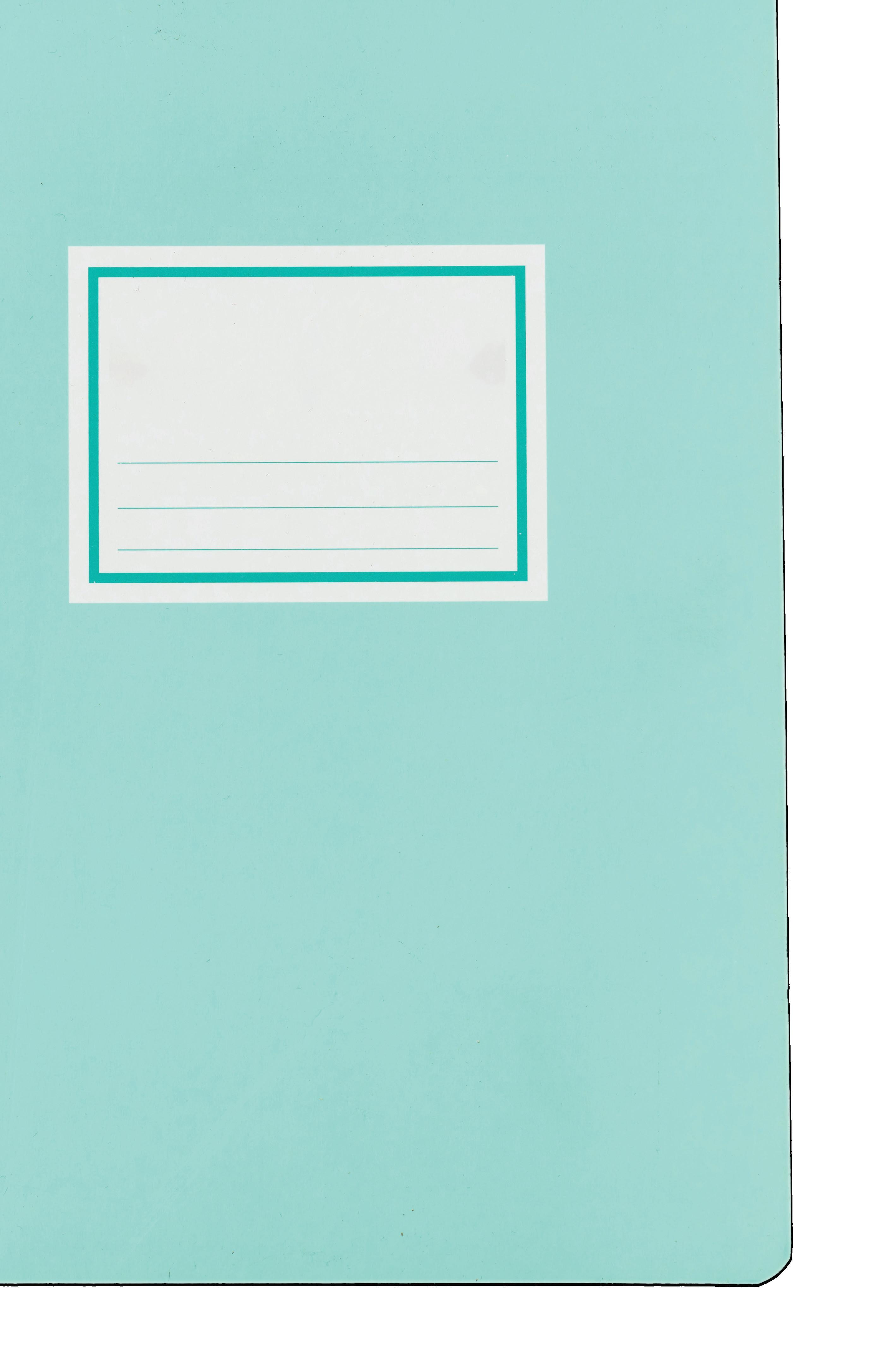
I have an all new panic setting in. Not that I’ll get COVID or that I’ll continue to force Amazon customer service into needless conversations, just out of desperate need for social engagement. Instead, my new fear is that my students are going to learn more without me. I’m watching their progress with a few online programs and I’m starting to worry that I might not be as great a teacher as I think I am. Keeping this in mind, please enjoy some highlights from my online teaching this week...
✽ Today, I taught over Zoom to the following creatures: two bearded dragons, two fish, a few bunnies, multiple cats, multiple dogs, a turtle, and an “invisible dog.” I do not remember any part of my training to involve teaching non-humans.

✽ Teaching over Zoom brings out my inner middle schooler. As I’m doing read-aloud, I’m not actively watching the screens. Every once in a while, I look up, and I swear the kids are making faces to mimic me. I have zero proof to back this up, but I just know it.
✽ These kids have much classier bedrooms than I did at the ripe old age of nine. I find myself getting distracted by the details and furnishings in their rooms, and actually had to catch myself today before I told a kid to get out of my view of her incredible bedroom chandelier. Meanwhile, back at my Teacher/Exhausted Mother hovel, I have clay stuck to my socks, tissue paper glued to my yoga pants, and smudged mascara from trying to rub my eyes with my elbow (as we’re not allowed to touch our faces with our hands).
I just ate boxed mac and cheese straight out of the pot, with a wooden spoon, while on Zoom, with my students. One kid even called me out on it, and I looked at him and said, “You do you, I’ll do me.” I feel like this little “slice of life” moment really highlights my current state of mind.
You know how awkward it is when kids grow out their bangs? They have 27 hair clips trying to make it manageable, and still their hair is in their face? That’s me right now. I have had the same bangs for my entire life. This is my COVID experiment. I am a giant forty-fouryear-old who looks like a totally awkward five-year-old. Add in the lack of hair dye, and my head is a hot mess. My favourite is when my students make comments like, “Wow! My little sister wears hair things like that too. Did you buy them at Claire’s?” Yes, yes I did.


The pandemic got real today. One of my students had a minor social hiccup with her friends at recess. She completely fell to pieces: sobbing, shaking, and snotty nosing all over the place.
I chatted with her for a while, and finally she said, “I’m just so sad because normally I would get a hug when I’m feeling so sad, but nobody can hug me now.” Holy moly. I basically took a bath in hand sanitizer and asked her if I could give her a hug. She quickly agreed and after I gave her one, she relaxed, smiled, and returned to music class. This pandemic is brutal. It is a major bummer to be isolated and not allowed to eat at restaurants. But the toll it is taking on our kids is truly heartbreaking.
For all my teacher friends who are finally returning to the classroom, I’ve been back in person since October, and I have some solid advice for you. I’ve put it into bullet points.

✽ Pants: You now have to wear real pants while you teach. Yes, it’s a drag, but make the transition gradually. Wear yoga pants and tell everyone that you have a circulation condition and the pants are doctor-mandated.


✽ Masks: Yes, teaching in a mask is no fun, but it does make muttering comments to yourself much easier. Nobody can see your mouth, or hear half of what you say, so you’re totally safe. Just remember, masks don’t conceal eye rolling. Oops!
✽ Zooming while in person: This one is tricky. You have kids in the classroom, but you still have kids Zooming in from home. Always be mindful of where the iPad is focused. It is nothing short of a miracle that my distance learners haven’t been blinded, due to several accidental close-ups of my rear end or nostrils.
✽ Hand sanitizer: Just embrace it. It kills germs, but it also removes Sharpie marks and works as a gel when your newly acquired gray hairs become unruly. It’s like the Windex of the pandemic.
Lots of love to my fellow teachers. You’ve got this!
This is why I love teaching eight- and nineyear-olds. Today, while reading aloud—my absolute favourite time, because I am an undercover actress who loves making funny voices in front of a captive audience—one of my distance learners came bursting onto the Zoom. This was how that went...
Being back in the classroom full time, things are feeling a bit more “normal.” I’m no longer teaching bearded dragons and turtles over Zoom, but I feel like “normal” things are now different. For example:
✽ One of my third graders coughed and the rest of the class all froze. The poor kid instantly began apologizing and talking about her allergies, meanwhile her classmates all looked at her like she was doing something wrong. I quickly reminded students that not every cough and sneeze is COVID; that’s why we wash our hands and use sanitizer. I caught the sideeye from a few kids, but at least my little friend with allergies was off the hook.



STUDENT: I’m so sorry for missing class today, but I had to go to the doctor.
ME: No worries, we’re glad you’re here now. (I return to reading aloud)
STUDENT: (talking over me with great excitement) I had to go to the doctor because I had a tick in my ear and it pooped!
ME: (clearly realizing that there is no funny voice that can compete with a pooping ear tick, I put down the book) What did you say?
STUDENT: I had a tick in my ear and it pooped!
ME: How in the world did that happen?
STUDENT: The doctor said that people get bugs stuck in their ears all the time. The most common one he sees is the cockroach.
ME: How on earth does somebody get a cockroach in their ear?!
STUDENT: (by now the entire class is losing their minds over this news update) Yeah! He’s seen snails, cockroaches, and even ticks. They had to use a straw connected to a vacuum to suck the poop out of my ear!
ME: (realizing that we are now going to spend the next 20 minutes processing the idea of pooping bugs crawling into our ears) Wow. Twenty-one years of teaching, and this is definitely a first.
STUDENT: (looking very proud) Yep! It was pretty cool.
ME: (sensing that we were ready to move on) Okay then, back to our book...
The best part was that the parents of the kids on Zoom got to listen to this conversation, and thoroughly enjoyed it. Happy to entertain!
✽ Fresh air is our friend. That is my new mantra. The windows are open and air purifiers are blasting. I honestly enjoy seeing how the fashions quickly changed after a week or two of our “fresh air classroom” approach. Gone are the shorts and tank tops. We are now a fashion runway for the newest and best snow wear collections! I did have to draw the line at the earmuffs, though. I don’t think the kids had cold ears, I think they just wanted an excuse to not listen to me. We also eat outside now, in the glorious sunshine. Even when there isn’t glorious sunshine.
✽ Never in my teaching career did I think I would hear myself say, “Please don’t share classroom supplies with your friends.” Talk about mixed messages for these kids! Pre-COVID, third grade was all about sharing—supplies, snacks, you name it. Now, I practically jump over desks when I see an eight-year-old reach into their neighbour’s supply box. I honestly don’t know if sharing supplies is that big of a COVID risk, but you better believe that I’m not going to be the teacher to test that out.
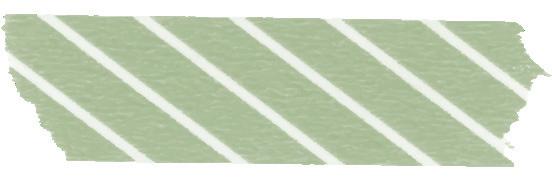

Overall, this post-COVID (or at least less-COVID) teaching world is definitely a new normal. It keeps us on our toes, but we’re teachers, and that’s what we do best. I feel that we should all wear our COVID teaching experiences as badges of honour. We problem-solved, learned new technologies, ran impromptu therapy sessions during Zoom classes, and came out on the other side. It was challenging, exhausting, and occasionally tear-inducing, but we did it. We’re teachers. That’s what we do.
SARAH ABBEY has been a primary school teacher for 23 years in the San Francisco Bay Area. She is grateful for her students and the many stories they provide for her to laugh, smile, and write about.

If you’re an elementary, secondary or early childhood education teacher thinking about taking your skills to another country, we should be top of your list.
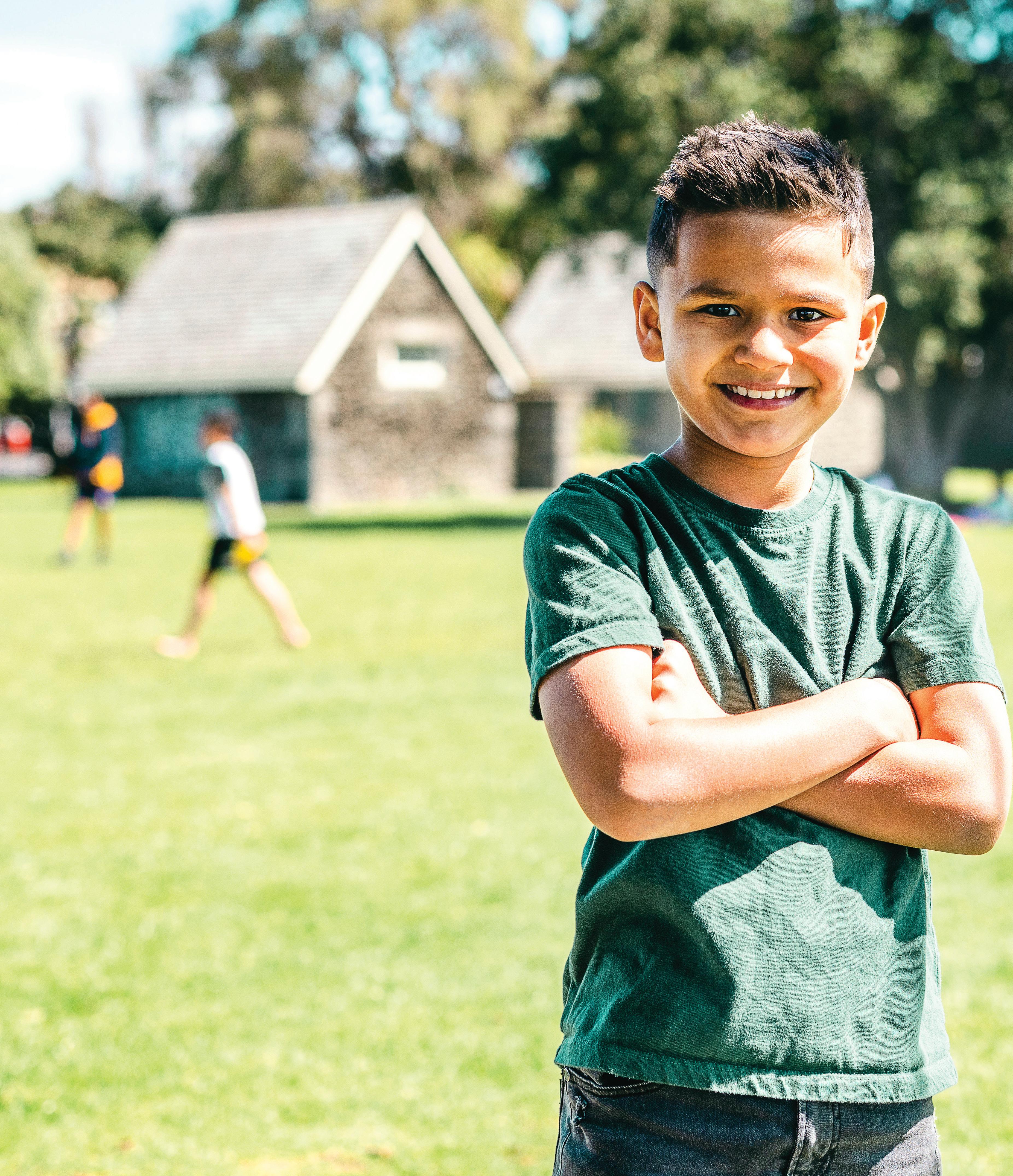
You’ll love it here. The natural environment is stunning, the laid-back Kiwi lifestyle is friendly and welcoming. If you like surfing, snowboarding, climbing, hiking or biking, you’re surrounded by opportunities. Even in the middle of our largest city, you’re still close to the beach & bush. Love eating? This is a foodie’s paradise. Into music, film and creativity? Same!
To make it easier for you to get here soon, there’s a special grant available of up to $10,000 NZD to help with moving expenses.
So, go on.
Scan the code to find out more



